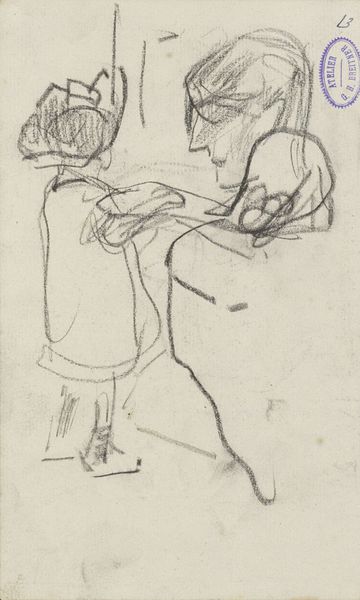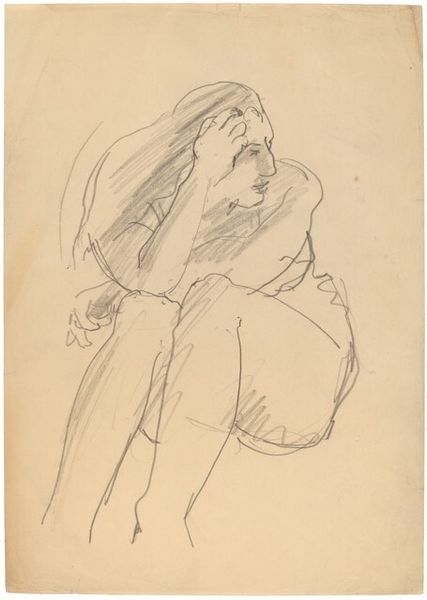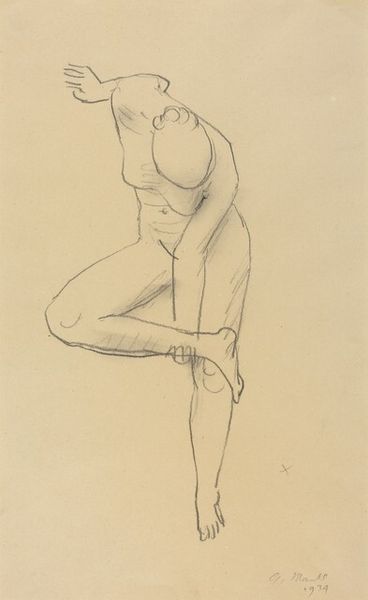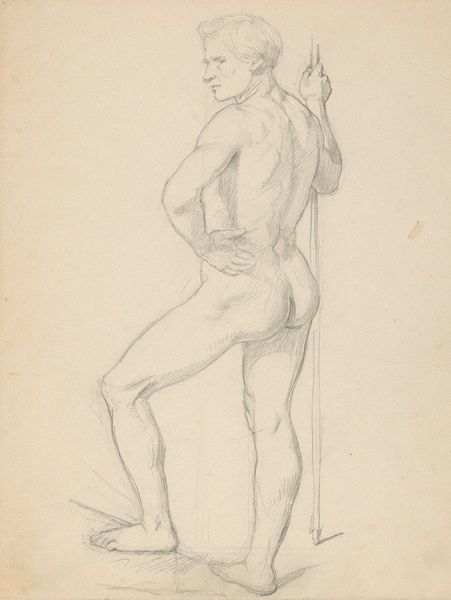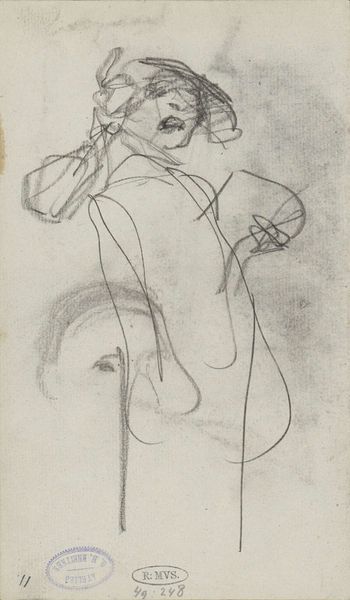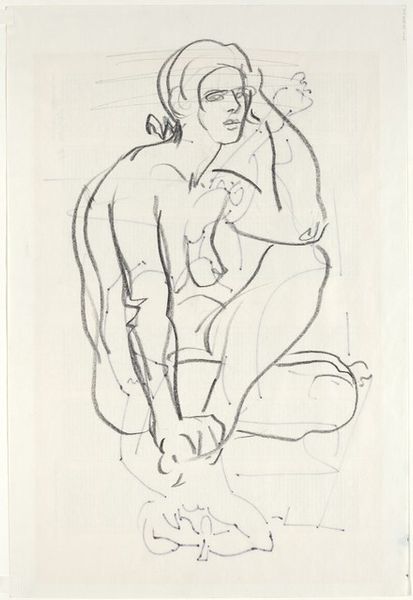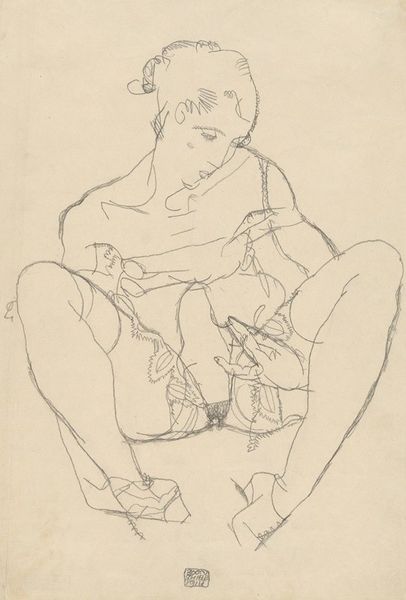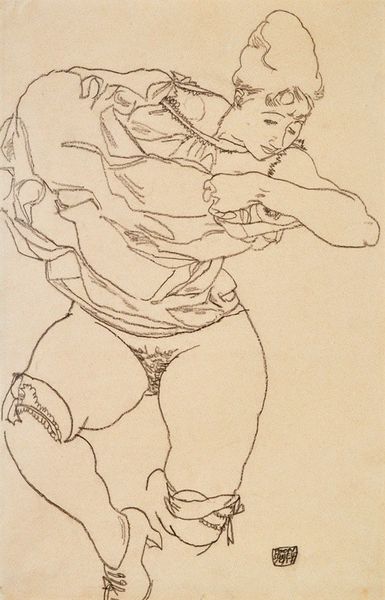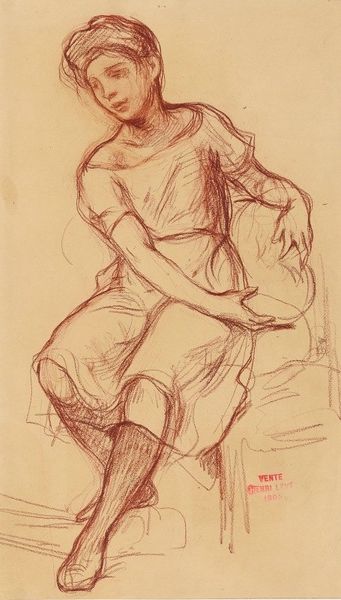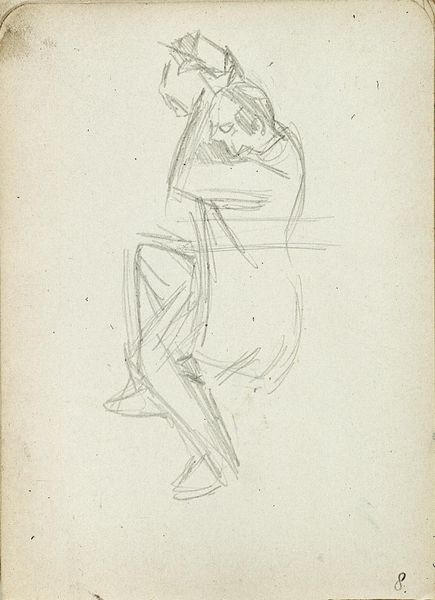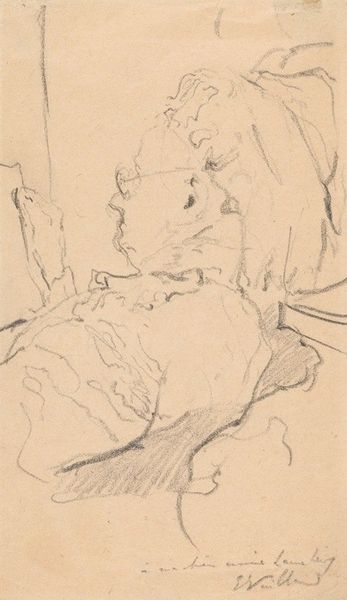
drawing, pencil
#
portrait
#
drawing
#
self-portrait
#
figuration
#
pencil
#
expressionism
#
nude
Copyright: Public Domain: Artvee
Editor: So, here we have Egon Schiele's "Seated Nude Girl Clasping Her Left Knee" from 1918, rendered in pencil. The figure's pose feels almost…defensive, vulnerable. What do you see in this drawing? Curator: What strikes me immediately is the raw, almost brutal handling of the pencil. Look at how Schiele attacks the paper, emphasizing line and form, but also revealing the labor involved. It moves beyond simply representing the subject and becomes a record of the artist's physical and mental engagement with his materials. Editor: So you're less interested in the subject and more in the actual process? Curator: Exactly. Think about the socio-economic context. 1918 was a turbulent time, a year of great upheaval due to World War I. How might material shortages and societal anxieties influence the choice of readily available and inexpensive materials like pencil and paper? This isn't some grand oil painting; it’s an intimate, almost desperate act of creation. Editor: That makes sense. Did the limitations push Schiele to focus on raw expression? Curator: Possibly. The expressive lines and contorted pose can be seen as products of a time when resources and possibly models, might have been scarce. Even the relatively small scale forces a concentrated intensity, shifting the viewer’s focus away from traditional notions of beauty towards something more immediate, visceral, and grounded in the realities of its making. Editor: So, by examining the materials and context, we can understand this drawing not just as a depiction, but as a material document of a specific historical moment and social circumstances. Curator: Precisely. The limitations can become the source of great expression. Editor: I never considered the implications of the materials themselves holding so much meaning. Thank you for enlightening me.
Comments
No comments
Be the first to comment and join the conversation on the ultimate creative platform.

